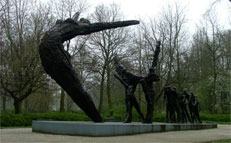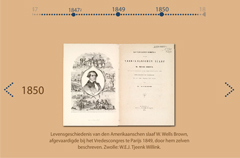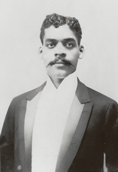Tales of freedom. A transnational perspective on slave narratives, 1789-2013
As of July 1, 1863, slavery was abolished in the West-Indian colonies of the Netherlands. At the time, commentators expected this date to be remembered as a happy day in Dutch history forever. Nonetheless, slave trade and slavery did not enter into the historical culture of the Netherlands until the late 20th century. Due to pressure from postcolonial migrants from Suriname and the Dutch Antilles, for instance, the National Slavery Monument was realised in 2002 and a range of commemorative activities were scheduled for 2013, the year that marks 150 years of abolition.
Slave trade and slavery have gained much more public recognition in Dutch historical culture since the turn of the century. A lot of public debate is dedicated to the white or eurocentric perspective of historical representations though, and critics argue to include the voices of enslaved themselves. Marijke’s study highlights historical changes and local differences in the use of slave narratives in debates about slave trade, slavery and its legacies from 1789 until the present.
Slave narratives
Egodocuments of enslaved pesons from the Dutch colonies are very rare, but Anglo-American abolitionism generated large numbers of so-called slave narratives. Famous examples include the Interesting Narrative of the Life of Olaudah Equiano, or Gustavus Vassa, the African. Written by himself (London 1789) and >Narrative of the Life of Frederick Douglass, an American slave. Written by himself (Boston 1845). Interestingly, these – and other – titles were published in the Netherlands. The Dutch editions of Equiano (1790) and Douglass (1846) are even ranked as first foreign translations of these texts that are nowadays seen as highlights of the slave narrative genre.
The existence of Dutch translations of Anglo-American slave narratives is rather surprising, for there was no strong abolitionist movement in the Netherlands. One of the research aims, therefore, is to find out why these slave narratives were reproduced in the Netherlands. Another question focuses on reception: how were slave narratives read in different national contexts in the era before the abolition of slavery?
Memory
Most Anglo-American slave narratives fell into oblivion after the abolition of slavery, but some were kept in circulation. One example is the autobiography (1849) of Josiah Henson, a refugee slave who was perceived the real-life model for the main character of Harriet Beecher Stowe’s famous novel Uncle Tom’s Cabin (1852). New editions of Henson’s autobiography were published in the 1870s, first in the UK, then in the Netherlands.
In the course of the twentieth century, in the wake of the New Negro Movement or Harlem Renaissance and the Civil Rights Movement, nineteenth-century slave narratives were rediscovered. Since then, historical slave narratives have been reprinted and studied continuously – especially in the US. At present, modern abolitionists add new slave narratives to the tradition, most often life stories of girls and women. These books are translated and published in the Netherlands as well, especially from the 1990s on. In the late 1970s and early 1980s, moreover, a few historical slave narratives were published in Dutch. Again, these findings raise questions about production and reception: why were these books printed in the Netherlands, how were they read and does the Dutch reception differ from the British and American reception?
Witnessing
In the ‘era of witnesses’, autobiographical testimonies are granted a major role in the process towards social justice and human rights. However, the use of first-person narratives by eighteenth- and nineteenth-century abolitionists in the UK and the US shows that the relation between autobiographical texts and human rights may have a longer history. On the other hand, first-person narratives were read differently in different times and contexts.
In order to find national differences and historical changes in the status of autobiographical testimonies, Marijke traces the production and reception of slave narratives that were been published in the UK, the US and the Netherlands between 1789 and the present. Her study starts with Olaudah Equiano’s autobiography (1789) and ends with life narratives of modern day slaves, such as Slave (2002) by Mende Nazer.






